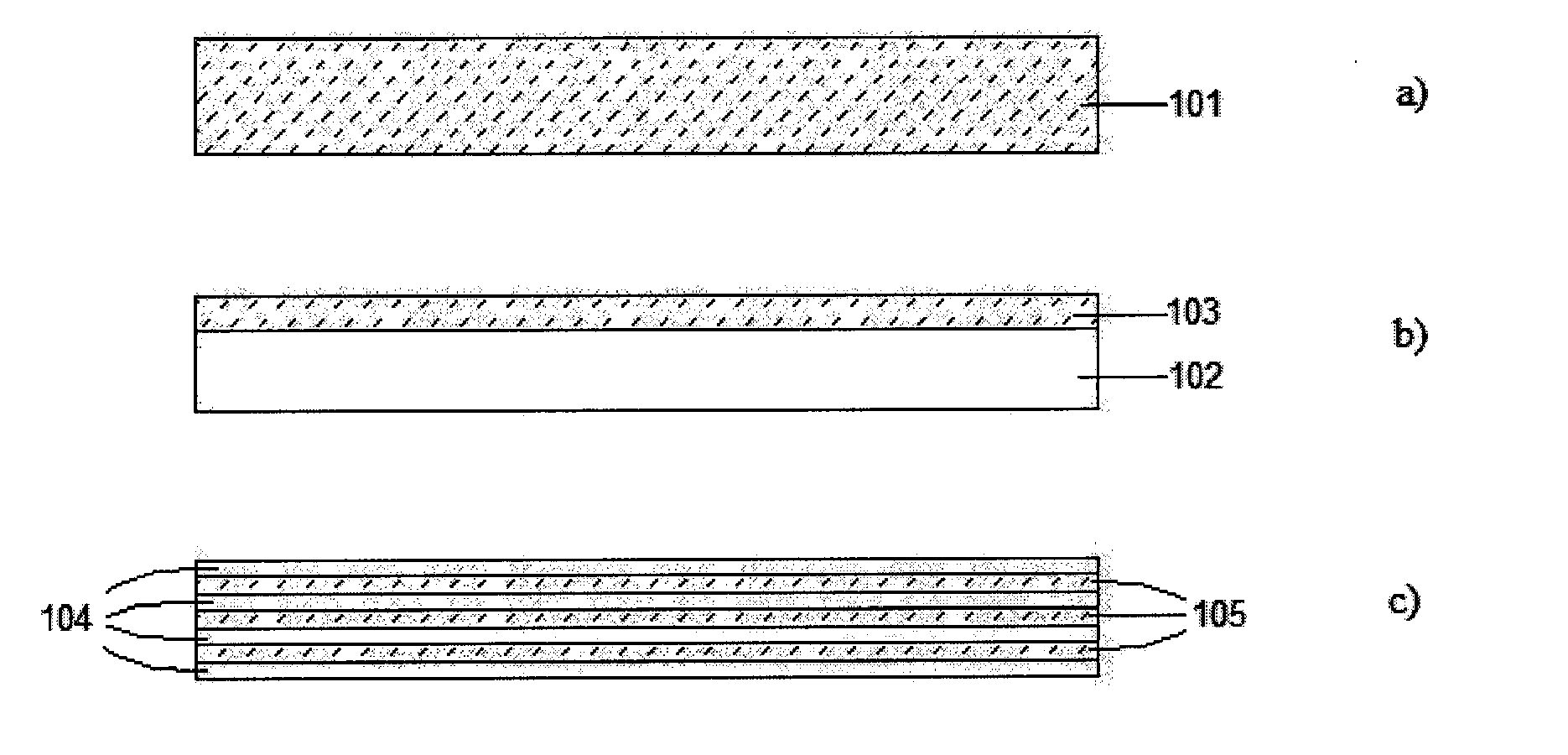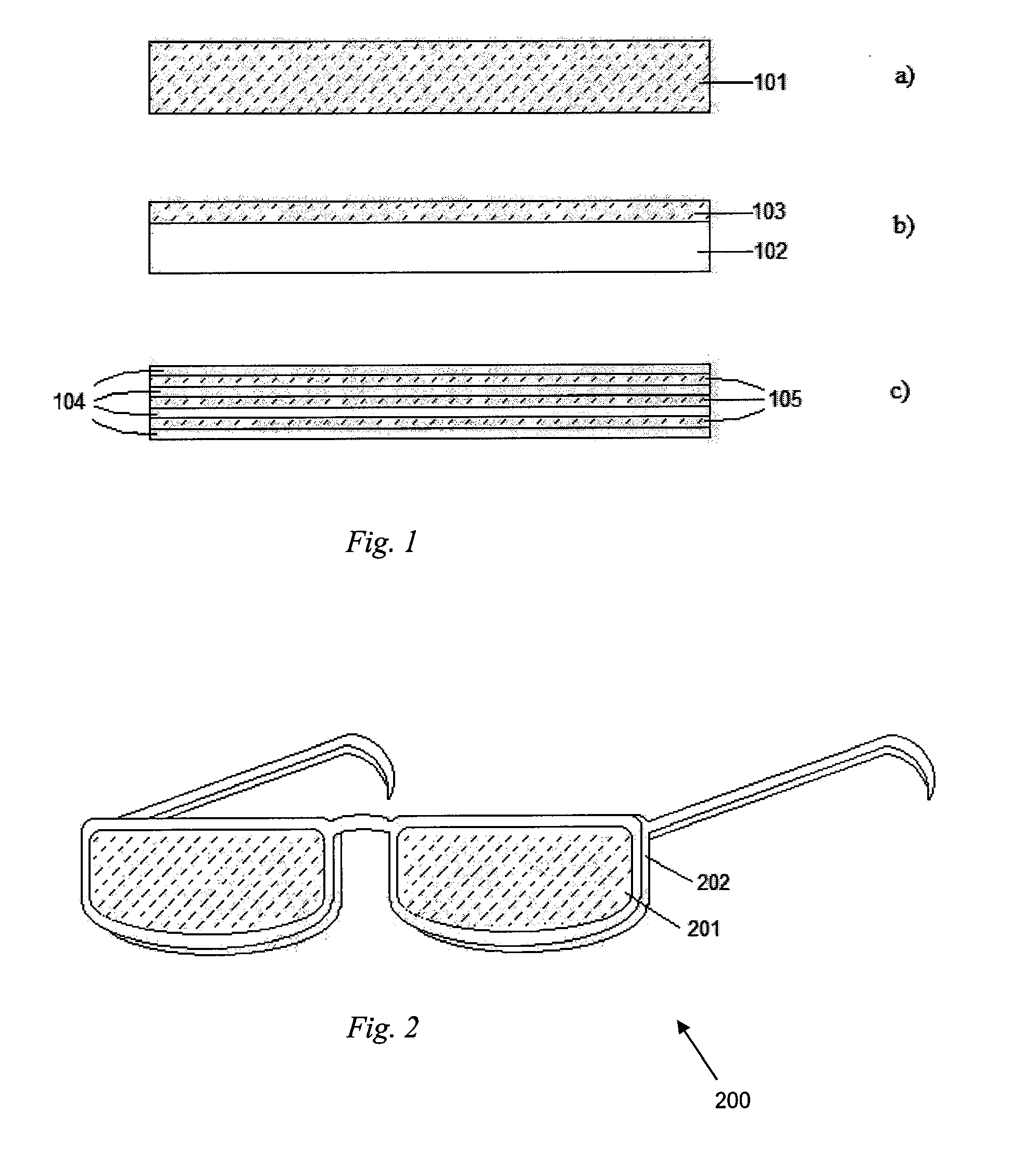Lenses having dispersed metal nanoparticles for optical filtering including sunglasses
a technology of metal nanoparticles and lenses, applied in the field of light attenuating lenses, can solve the problems of visual discomfort, damage to the cornea and the lens of the eye, and even more severe damage caused by near ir light exposure,
- Summary
- Abstract
- Description
- Claims
- Application Information
AI Technical Summary
Benefits of technology
Problems solved by technology
Method used
Image
Examples
Embodiment Construction
[0017]Sunglasses according to the invention comprise a pair of lenses, the lenses being a single layer or multiple-layered structure including a nanoparticle / polymer composite and a layer comprising a dispersion of metal nanoparticles in a polymer. The composite layer comprises a continuous phase comprising at least one polymer, and a plurality of metal nanoparticles dispersed in the polymer continuous phase, thus forming a dispersed system. Preferred metals are noble metals such as gold and silver, with gold being the most preferred. As used herein, the metal nanoparticle is essentially a metal at the surface of the nanoparticle, hence metal-inorganic hybrid nanoparticles, for example core-shell nanoparticles such as gold deposited as a shell about a silica core, is included in the metal nanoparticles for use in the invention. The polymer is generally a dry solid in the completely fabricated lens such that the metal nanoparticles are locked in position to resist migration and to av...
PUM
| Property | Measurement | Unit |
|---|---|---|
| size | aaaaa | aaaaa |
| weight percent | aaaaa | aaaaa |
| average cross sectional size | aaaaa | aaaaa |
Abstract
Description
Claims
Application Information
 Login to View More
Login to View More - R&D
- Intellectual Property
- Life Sciences
- Materials
- Tech Scout
- Unparalleled Data Quality
- Higher Quality Content
- 60% Fewer Hallucinations
Browse by: Latest US Patents, China's latest patents, Technical Efficacy Thesaurus, Application Domain, Technology Topic, Popular Technical Reports.
© 2025 PatSnap. All rights reserved.Legal|Privacy policy|Modern Slavery Act Transparency Statement|Sitemap|About US| Contact US: help@patsnap.com


